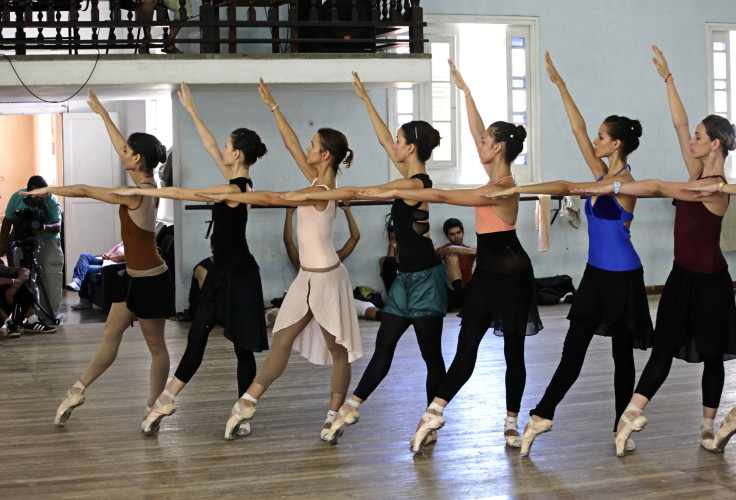Dancing To Freedom: Cuban Ballet Troupe Defects To US

The defection of seven ballet dancers from Cuba in Mexico last month marks the latest high-profile case of Cuban citizens seeking asylum outside the Communist island nation.
According to the Cuban exile blog Café Fuerte, six of the dancers have since crossed the Mexican border into the U.S. to request asylum and are currently in Miami, while one remains in Mexico.
"It's the hardest decision I've made in my life, but we’re not thinking about the past, but rather the future," said one of the dancers, Annie Ruiz Diaz, 24, the blog reported. "We were determined to find a better artistic life and economic well-being for our families."
The other dancers were identified as Randy Crespo, 22; Edward Gonzalez, 23; Jose Justiz, 20; Ariadnni Martin, 20, and Luis Victor Santana, 23. Alejandro Mendez, 20, is said to be the dancer still in Mexico.
While reports remain unconfirmed, Ramona de Saa, the director of Havana’s National Ballet School, where six of the dancers were trained, expressed her disappointment over the news.
“It pains us,” she said, the Guardian reported.
Frank Calzon, executive director of the Center for a Free Cuba in Washington, said the defection of Cuban artists is not uncommon.
“Writers, intellectuals, artists -- they’re all under the thumb of the Cuban regime,” Calzon told the International Business Times in a phone interview.
Calzon added that while that defecting Cuban artists and athletes garner more media recognition, many more average Cuban citizens seeking asylum are turned away from the U.S.
In the 2012 fiscal year, the U.S. Coast Guard detained 1,275 Cubans trying to enter the country by boat, the Sun Sentinel reported. During that same period, 1,948 Cubans were granted refugee status and admitted into the U.S.
Under the so-called “wet foot, dry foot policy,” instituted in 1995, Cuban asylum-seekers found at sea (“wet feet”) are sent back to Cuba, while those that make it to shore (“dry feet”) are allowed to remain in the U.S. and given the opportunity to apply for citizenship under the Cuban Adjustment Act of 1966, which privileges them over refugees from most countries.
Over the past few years, the U.S. Department of Homeland Security has set an annual refugee admission ceiling for Latin America and the Caribbean at 5,500.
© Copyright IBTimes 2024. All rights reserved.





















